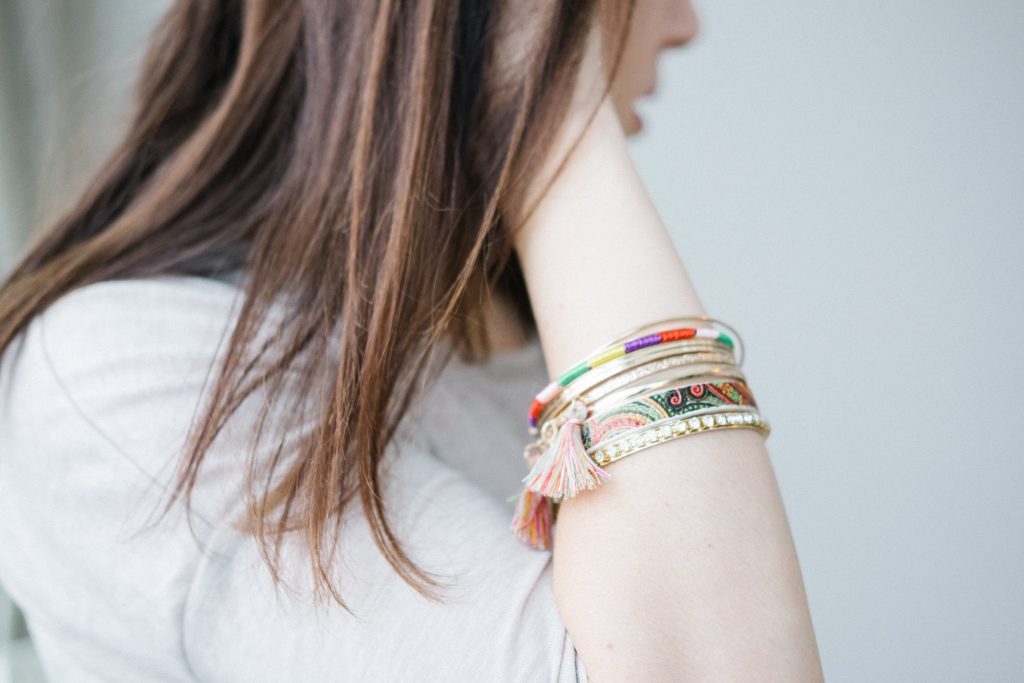Playing with your hair – twirling it around a finger when you’re tired or bored, for example – is a harmless habit. But for millions of people, pulling at their hair isn’t harmless. According to the National Center for Biotechnology Information, up to four percent of the population* suffers from trichotillomania, a disorder characterized by a recurrent, irresistible urge to pull hair out of the scalp, eyebrows, eyelashes and other parts of the body. Women are four times as likely as men to be affected.* Most people with trichotillomania pull enough hair to have noticeable thin or bald patches on the head or other parts of the body. Some are missing eyelashes or eyebrows and some even chew or eat the hair they pull out.
Trichotillomania is not just a nervous habit although it may be triggered or made worse by stress. It is generally classified as an impulse control disorder, meaning it is driven by an uncontrollable impulse or urge to perform a harmful act. The individual feels increasing tension that can only be relieved by performing the act; afterward, there is a feeling of relief often followed by a sense of shame or regret. In some people the disorder is mild and manageable, but for many the compulsion to pull out the hair is overwhelming, and if not treated, can have serious consequences for health and well-being.
People who pull their hair are not trying to hurt themselves. They have a neurologically-driven need to pull. Although doing so acts as an immediate soothing mechanism, repeated episodes of hair-pulling and the disfigurement that results cause significant emotional distress. Most people try to style their hair to cover the bald patches or wear hats or wigs or false eyelashes to disguise the condition. Embarrassment and shame may cause them to shy away from social and job opportunities, leading to isolation, low self-esteem and a sense of having lost control of their lives. Depression and anxiety are common among those with trichotillomania.
There isn’t an exact known cause for trichotillomania, but there may be a genetic component to the disorder. For example, having a close relative who is affected increases an individual’s risk. An imbalance in the brain chemicals serotonin and dopamine might play a role. It usually develops between the ages of 11 and 13 and while it is also seen in younger children (even as young as a year-old), those cases are often mild and resolve after a year or so without treatment. For those for whom it is a lifelong disorder, complications include abrasions and infections in the area where the hair is pulled and digestive problems for those who eat the hair. Many are also afflicted with other body-focused repetitive behaviors (BFRB’s), such as skin picking, nail biting or chewing the lips.
Treatment
To treat trichotillomania, a combination of education, medication and Cognitive Behavior Therapy (CBT) tend produce the most successful results. CBT is an approach in which patients learn to change their behaviors, thoughts and feelings so they can identify and control the impulses that lead to pulling without giving in to them. CBT approaches will often include the Comprehensive Model for Behavioral Treatment (ComB) developed by Charles Mansueto and his colleagues at the Behavior Therapy Center of Greater Washington. The ComB approach addresses the diverse factors that contribute to hair pulling, including the function of the hair-pulling as well any cognitive, motoric, sensory and affective factors that contribute. Sometimes treatment may include something called a competing response. A competing response typically involves using the same muscles as in hair-pulling, but used in a discreet manner that would not be easily noticed if done in public. Clenching your fist and pressing your arm to your side is a common competing response for hair-pulling.
Trichotillomania and other BFRB’s can be chronic and obstinate disorders. For some, it may be a way of dealing with negative feelings and emotions, such as stress, loneliness or anxiety. However, the negative effects and humiliation that result can exacerbate those emotions. Early detection and intervention are critical since, with the exception of very young children, the disorder seldom goes away without treatment. Psychotherapy can help manage the emotions and eliminate the impulsive behavior that wreaks havoc on health and quality of life.
* http://www.ncbi.nlm.nih.gov/pubmedhealth/PMH0002485/
Francine Rosenberg, PsyD., practices cognitive-behavior therapy, specializing in treatment of obsessive-compulsive disorder as well as stress, depression, anxiety disorders, and behavioral disorders.
Morris Psychological Group, P.A. offers a wide range of therapy and evaluation services to adults, children and adolescents. www.morrispsych.com







